ELAR 1.10
Author's purpose and craft: listening, speaking, reading, writing, and thinking using multiple texts. The student uses critical inquiry to analyze the authors' choices and how they influence and communicate meaning within a variety of texts. The student analyzes and applies author's craft purposefully in order to develop his or her own products and performances. The student is expected to:
- (1) discuss the author's purpose for writing text;
- (A) discuss how the use of text structure contributes to the author's purpose;
- (B) discuss with adult assistance the author's use of print and graphic features to achieve specific purposes;
- (C) discuss how the author uses words that help the reader visualize; and
- (D) listen to and experience first- and third-person texts.
- Free Plan
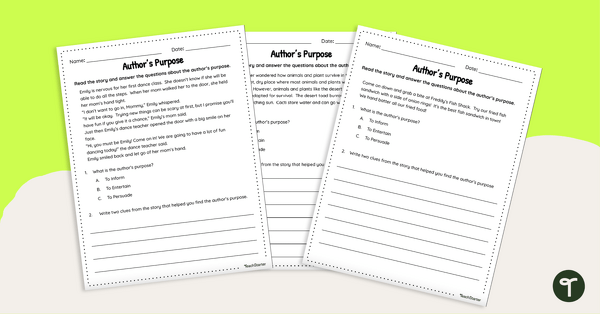
Free Author's Purpose Worksheets
Assess reading comprehension by reviewing 3 short passages and answering questions about the author's purpose.
- Plus Plan
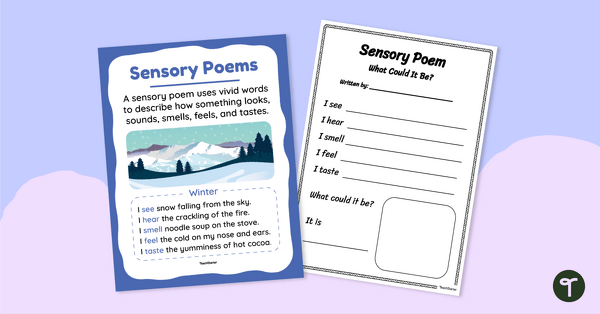
Sensory Poem Poster
A poster providing a definition and example of a sensory poem.
- Free Plan
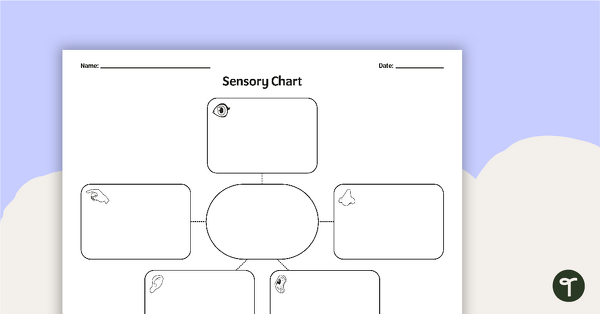
Sensory Chart Graphic Organizer
A graphic organizer for students to use when categorizing sensory details.
- Plus Plan
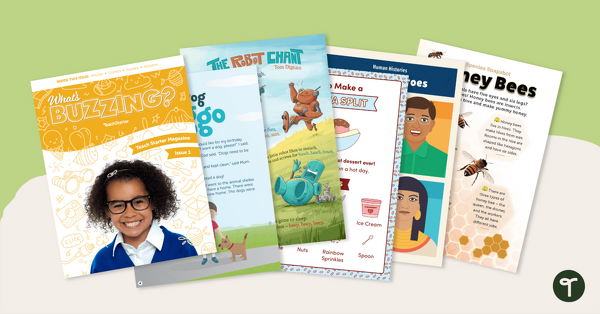
Grade 1 Magazine - What's Buzzing? (Issue 1)
A beautifully designed, 24-page reading magazine specifically written for Grade 1 students.
- Plus Plan
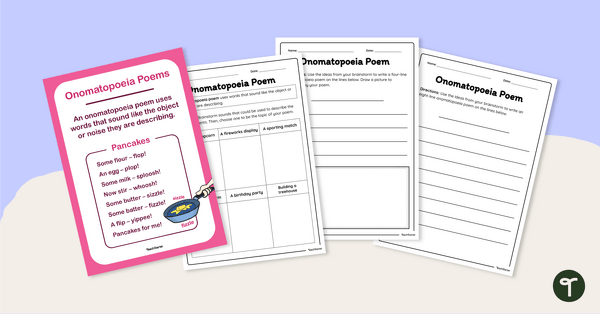
Onomatopoeia Poems Poster
A poster providing a definition and example of an onomatopoeia poem.
- Plus Plan
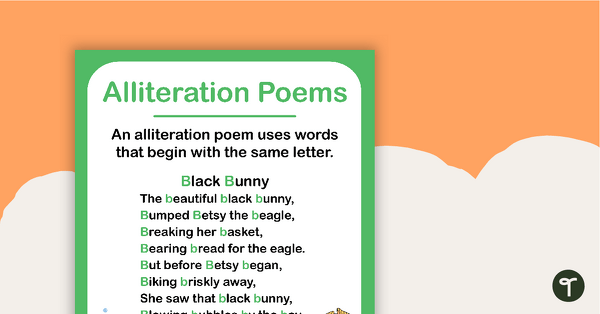
Alliteration Poem Poster
A poster providing a definition and example of an alliteration poem.
- Plus Plan
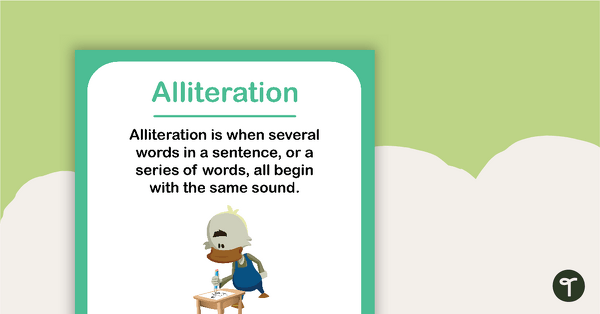
Alliteration Poster For Young Students
A poster to use with young students when teaching alliteration.
- Plus Plan
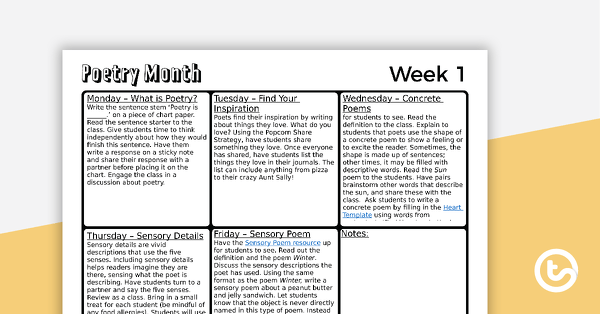
Primary Weekly Poetry Guide - Week 1
Use this weekly poetry guide to celebrate National Poetry Month in your primary classroom.
- Plus Plan
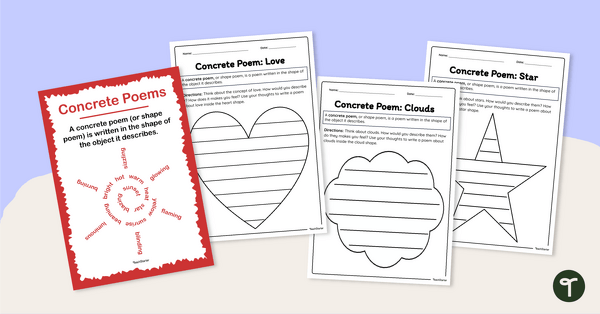
Concrete Poem Poster
A poster providing a definition and example of a concrete poem (or shape poem).
- Plus Plan
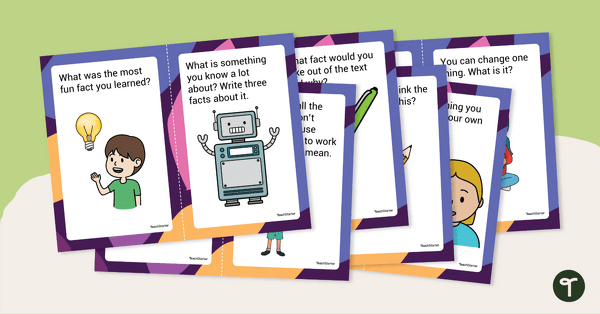
Fun With Nonfiction Task Cards
Solidify your nonfiction reading response lessons with this set of 12 comprehension task cards.
- Plus Plan
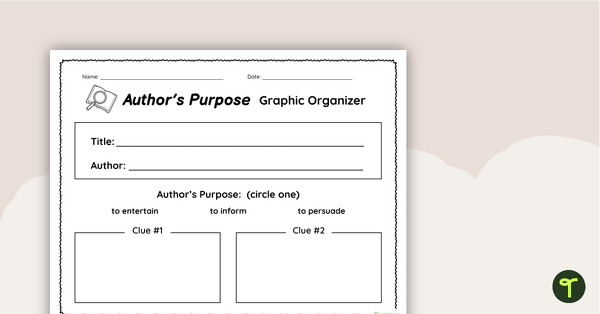
Author's Purpose Graphic Organizer
Organize ideas and context clues that support the author's purpose from your assigned texts.
- Plus Plan
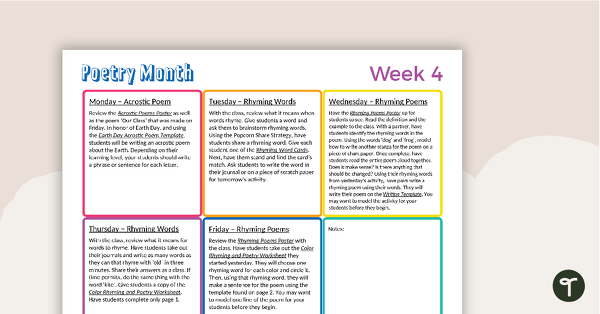
Primary Weekly Poetry Guide - Weeks 4 and 5
Use this weekly poetry guide to celebrate National Poetry Month in your primary classroom.
- Plus Plan
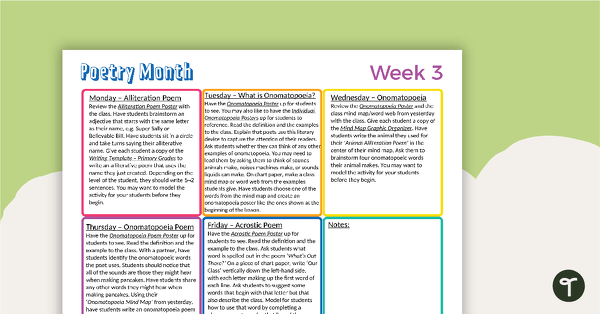
Primary Weekly Poetry Guide - Week 3
Use this weekly poetry guide to celebrate National Poetry Month in your primary classroom.
- Plus Plan

Onomatopoeia Poster
A poster providing a definition and examples of onomatopoeia.
- Plus Plan
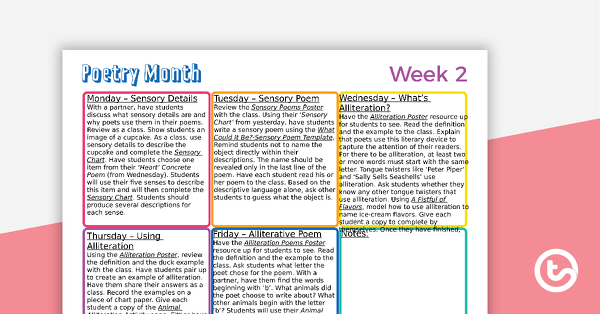
Primary Weekly Poetry Guide - Week 2
Use this weekly poetry guide to celebrate National Poetry Month in your primary classroom.
- Plus Plan
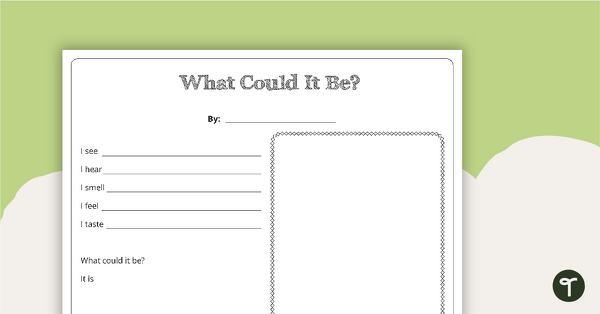
What Could It Be? - Sensory Poem Template
Use this template when teaching students how to write sensory poems.
- Plus Plan
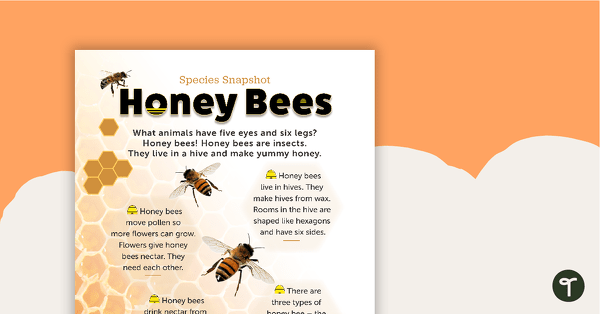
Species Snapshot Worksheet - Honey Bees
A comprehension worksheet paired with an article about honey bees.
- Plus Plan
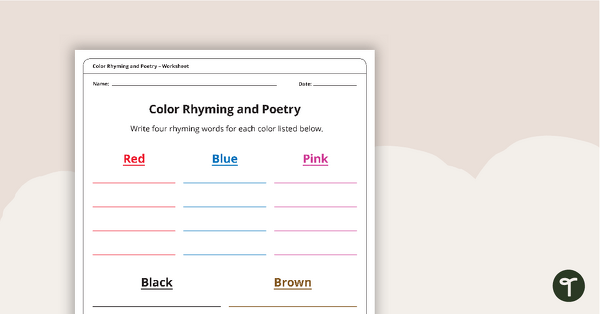
Color Rhyming and Poetry Worksheet
A worksheet to help students form rhyming words and create a rhyming poem.
- Plus Plan

Grade 1 Magazine - "What's Buzzing?" (Issue 1) Task Cards
Five sets of literacy rotation task cards to be used in conjunction with issue 1 of Teach Starter's Grade 1 magazine.
- Plus Plan

Celebrating Poetry Month in the Primary Grades – Weeks 4 and 5
Celebrate National Poetry Month in the primary classroom with this planning guide and set of resources.
- Plus Plan
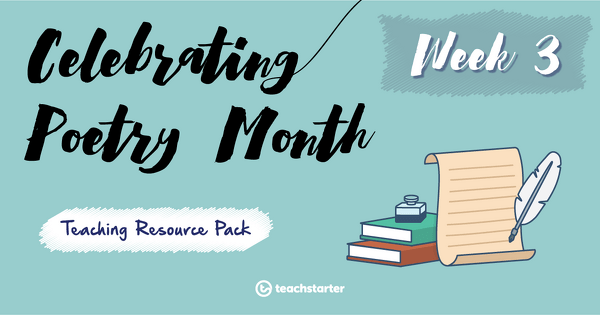
Celebrating Poetry Month in the Primary Grades - Week 3
Celebrate National Poetry Month in the primary classroom with this planning guide and set of resources.
- Plus Plan
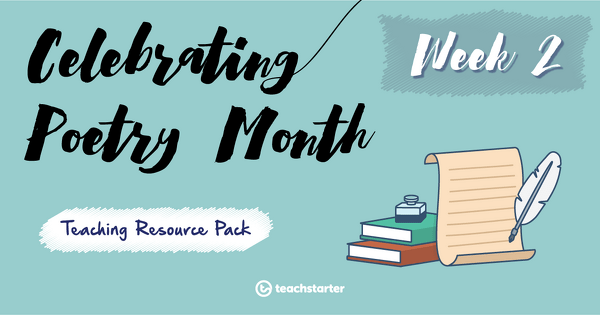
Celebrating Poetry Month in the Primary Grades - Week 2
Celebrate National Poetry Month in the primary classroom with this planning guide and set of resources.
- Plus Plan

Exploring Informative Texts Unit Plan - Year 1 and Year 2
This English unit has been designed to introduce the informative genre to younger students; specifically, the purpose, structure and language features of information reports.
- Plus Plan
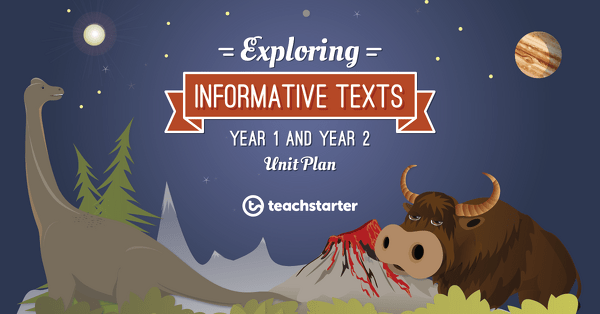
Separating Fact From Fiction
A 60 minute lesson in which students will understand the difference between real and make-believe.